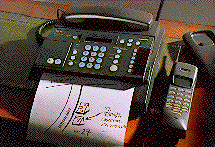

|
JPL's Wireless Communication Reference WebsiteChapter: Network Concepts and Standards |
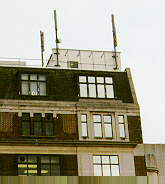 The GSM digital cellular telephone net was introduced in Europe in the 900 MHz band
in the early 1990's. The acronym GSM originally stood for "Groupe Special
Mobile" but later the name "Global System for Mobile communication" was adopted. The
system employs Time Division Multiple Access (TDMA)
of 8 subscriber signals per channel.
The channel bit rate is 270.8 kbit/s and Gaussian Minimum Shift Keying (GMSK) is used.
The system is suited for voice communication as well as for circuit-switched data
communication.
The GSM digital cellular telephone net was introduced in Europe in the 900 MHz band
in the early 1990's. The acronym GSM originally stood for "Groupe Special
Mobile" but later the name "Global System for Mobile communication" was adopted. The
system employs Time Division Multiple Access (TDMA)
of 8 subscriber signals per channel.
The channel bit rate is 270.8 kbit/s and Gaussian Minimum Shift Keying (GMSK) is used.
The system is suited for voice communication as well as for circuit-switched data
communication.
In the US, the IS54 digital cellular concepts proposes a channel bit rate of 48.6 kbit/s, using pi/4 Differential Quadrature Phase Shift Keying (DQPSK) modulation on a 830 MHz carrier. A TDMA access scheme with three subscribers on each channel is proposed to ensure compatibility with the 30 kHz frequency spacing used for existing AMPS analogue networks. Voice is coded into 8 kbit/s, and including error control coding and signaling the bit rate per subscriber is 16.2 kbit/s.
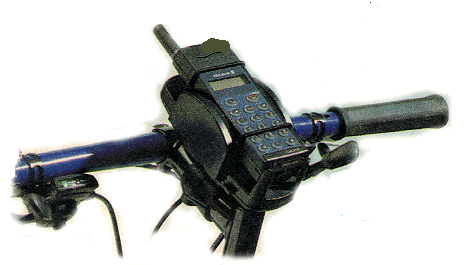 From observing
the developments in the late 1980's, Donald Cox concluded that the technology
of personal communication progressed along two completely separate evolutionary
paths: high-power vehicular cellular mobile radio technology, and low-power
pedestrian and stationary cordless telephone
technology.
From observing
the developments in the late 1980's, Donald Cox concluded that the technology
of personal communication progressed along two completely separate evolutionary
paths: high-power vehicular cellular mobile radio technology, and low-power
pedestrian and stationary cordless telephone
technology. 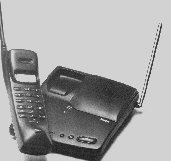 The two techniques are essentially different. The vehicular cellular technology
has been developed during the last 45 years, and new systems are still designed
to meet the standards of the wireline telephony service. In contrast to this,
the history of the handheld cordless telephone is, at most, 15 years and the
system is designed with a focus on miniaturization at the cost of some services.
Particularly, restrictions imposed by power consumption are relevant to handheld
sets. Power-demanding digital processing operations, such as forward error-
correction coding, speech coding and multipath channel equalization are extensively
employed in the proposed system for future vehicle telephone nets, but still
appear impractical in low- powered handheld sets. Reduction of the power consumption
during the standby mode is one of the reasons why the user of a cordless set
can initiate a telephone call, but cannot receive calls unless a paging
system is included. Nonetheless, with the market
introduction of GSM, marketers mainly described it as a handheld system.
The two techniques are essentially different. The vehicular cellular technology
has been developed during the last 45 years, and new systems are still designed
to meet the standards of the wireline telephony service. In contrast to this,
the history of the handheld cordless telephone is, at most, 15 years and the
system is designed with a focus on miniaturization at the cost of some services.
Particularly, restrictions imposed by power consumption are relevant to handheld
sets. Power-demanding digital processing operations, such as forward error-
correction coding, speech coding and multipath channel equalization are extensively
employed in the proposed system for future vehicle telephone nets, but still
appear impractical in low- powered handheld sets. Reduction of the power consumption
during the standby mode is one of the reasons why the user of a cordless set
can initiate a telephone call, but cannot receive calls unless a paging
system is included. Nonetheless, with the market
introduction of GSM, marketers mainly described it as a handheld system.
A number of systems for personal communications have been introduced or proposed. In the UK subscribers can make a telephone connection using a handset within a few hundred meters from a "Telepoint" base station. The Digital European Cordless Telephone (DECT) network is a further development of such a personal system, aimed at pan-European standardization of wireless PBXs. The band 1880 to 1900 MHz has been designated to the DECT service. The development and design of such systems does not only address carefully combining spectrum efficiency and performance objectives, but also has to meet constraints on power consumption.
|
Photo: The personal
wrist communicator was science fiction in "Dick Tracy", a book
published in 1930, but taken seriously by Philips Semiconductors in their
vision for 2002.
| 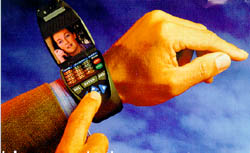
|
|
Generation:
| 1 | 2 | 2.5 | 3 |
|
CT1
|
CT2, DECT
|
converge with cellular PCS
| ||
|
AMPS, NMT
| ||||
|
Mobitex
|
converge with cellular PCS
|
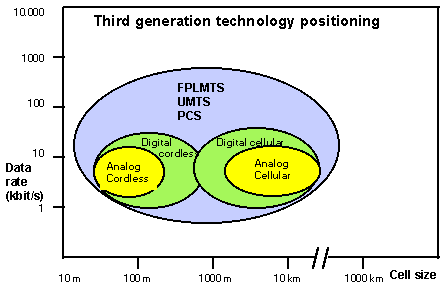
Cellular and cordless converge into future systems, such as UMTS
3G widely uses CDMA technology. Licenses for 3G networks have been auctioned in many countries in 2000. Mobile Internet, particularly based on the WAP protocol, is seen by many as the driving market factor.
4G systems are intended to provide a very "open architecture" to allow flexible introduction of new features, services and business models. Augmented reality is one of the topics of interest.
 Slides of Wireless Systems and their Evolution
Slides of Wireless Systems and their Evolution
